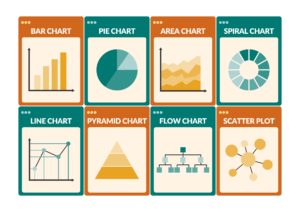Python - NumPy
NumPy, short for Numerical Python, is one of the most fundamental libraries in the Python ecosystem. It provides a wide range of tools for numerical computation and serves as the backbone of many scientific and data analysis applications. Whether you’re just starting your journey in Python or you’re an experienced data scientist, understanding NumPy is crucial for efficient and effective numerical processing.
In this blog, we’ll explore the core features of NumPy, learn how to perform basic operations, and dive into examples that showcase its versatility.
What is NumPy?
NumPy is an open-source library designed for high-performance numerical computations. At its core is the powerful n-dimensional array object called ndarray. Unlike Python’s native lists, NumPy arrays are more efficient, both in terms of memory and computational speed, thanks to their fixed type and contiguous memory layout.
Key Features of NumPy:
Efficient Data Storage: Handles large datasets with minimal memory overhead.
Broadcasting: Enables element-wise operations on arrays of different shapes.
Mathematical Functions: Provides an extensive library of mathematical functions for operations on arrays.
Linear Algebra Support: Offers robust tools for matrix operations and linear algebra.
Integration: Easily integrates with other libraries like pandas, SciPy, and scikit-learn.
Installing NumPy
Before diving into the examples, ensure that NumPy is installed on your system. You can install it using pip:
pip install numpy
Getting Started with NumPy
Importing NumPy
The first step in using NumPy is importing it into your script. By convention, it’s imported as np:
import numpy as np
Creating Arrays
NumPy provides multiple ways to create arrays:
From a Python List:
array = np.array([1, 2, 3, 4, 5])
print(array)
Output:
[1 2 3 4 5]
Using Built-in Functions:
np.zeroscreates an array filled with zeros:
zeros_array = np.zeros((2, 3))
print(zeros_array)
Output:
[[0. 0. 0.]
[0. 0. 0.]]
np.ones creates an array filled with ones:
ones_array = np.ones((2, 3))
print(ones_array)
np.arange creates an array with a specified range:
range_array = np.arange(0, 10, 2)
print(range_array)
Output:
[0 2 4 6 8]
np.linspace generates an array of evenly spaced numbers over a specified interval:
linspace_array = np.linspace(0, 1, 5)
print(linspace_array)
Output:
[0. 0.25 0.5 0.75 1. ]
Array Operations
Basic Arithmetic
NumPy allows you to perform element-wise arithmetic operations effortlessly:
a = np.array([1, 2, 3])
b = np.array([4, 5, 6])
# Addition
print(a + b)
# Subtraction
print(a - b)
# Multiplication
print(a * b)
# Division
print(a / b)
Output:
[5 7 9]
[-3 -3 -3]
[4 10 18]
[0.25 0.4 0.5 ]
Broadcasting
Broadcasting is a powerful feature that allows operations on arrays of different shapes:
a = np.array([1, 2, 3])
print(a + 10) # Adds 10 to each element
Output:
[11 12 13]
Array Indexing and Slicing
NumPy arrays support advanced indexing and slicing, which is similar to Python lists but more powerful:
Indexing:
arr = np.array([10, 20, 30, 40, 50])
print(arr[2]) # Access the third element
Output:
30
2. Slicing:
print(arr[1:4]) # Access elements from index 1 to 3
Output:
[20 30 40]
3. Boolean Indexing:
print(arr[arr > 25]) # Filter elements greater than 25
Output:
[30 40 50]
Multi-Dimensional Arrays
NumPy supports multi-dimensional arrays, enabling matrix-like computations:
matrix = np.array([[1, 2, 3], [4, 5, 6], [7, 8, 9]])
# Access element at row 1, column 2
print(matrix[0, 1])
# Slice rows and columns
print(matrix[:2, 1:])
Output:
2
[[2 3]
[5 6]]
Mathematical and Statistical Functions
NumPy comes with built-in functions for common mathematical and statistical operations:
Sum and Mean:
arr = np.array([1, 2, 3, 4, 5])
print(np.sum(arr)) # Sum of all elements
print(np.mean(arr)) # Mean of the elements
2. Standard Deviation:
print(np.std(arr))
3. Matrix Operations:
a = np.array([[1, 2], [3, 4]])
b = np.array([[5, 6], [7, 8]])
# Dot product
print(np.dot(a, b))
# Transpose
print(a.T)
Practical Examples
Example 1: Solving Linear Equations
NumPy can solve systems of linear equations efficiently:
# Solve 2x + 3y = 8 and x + y = 3
coefficients = np.array([[2, 3], [1, 1]])
values = np.array([8, 3])
solution = np.linalg.solve(coefficients, values)
print(solution)
Output:
[1. 2.]
Example 2: Generating Random Numbers
random_array = np.random.rand(3, 3)
print(random_array)




